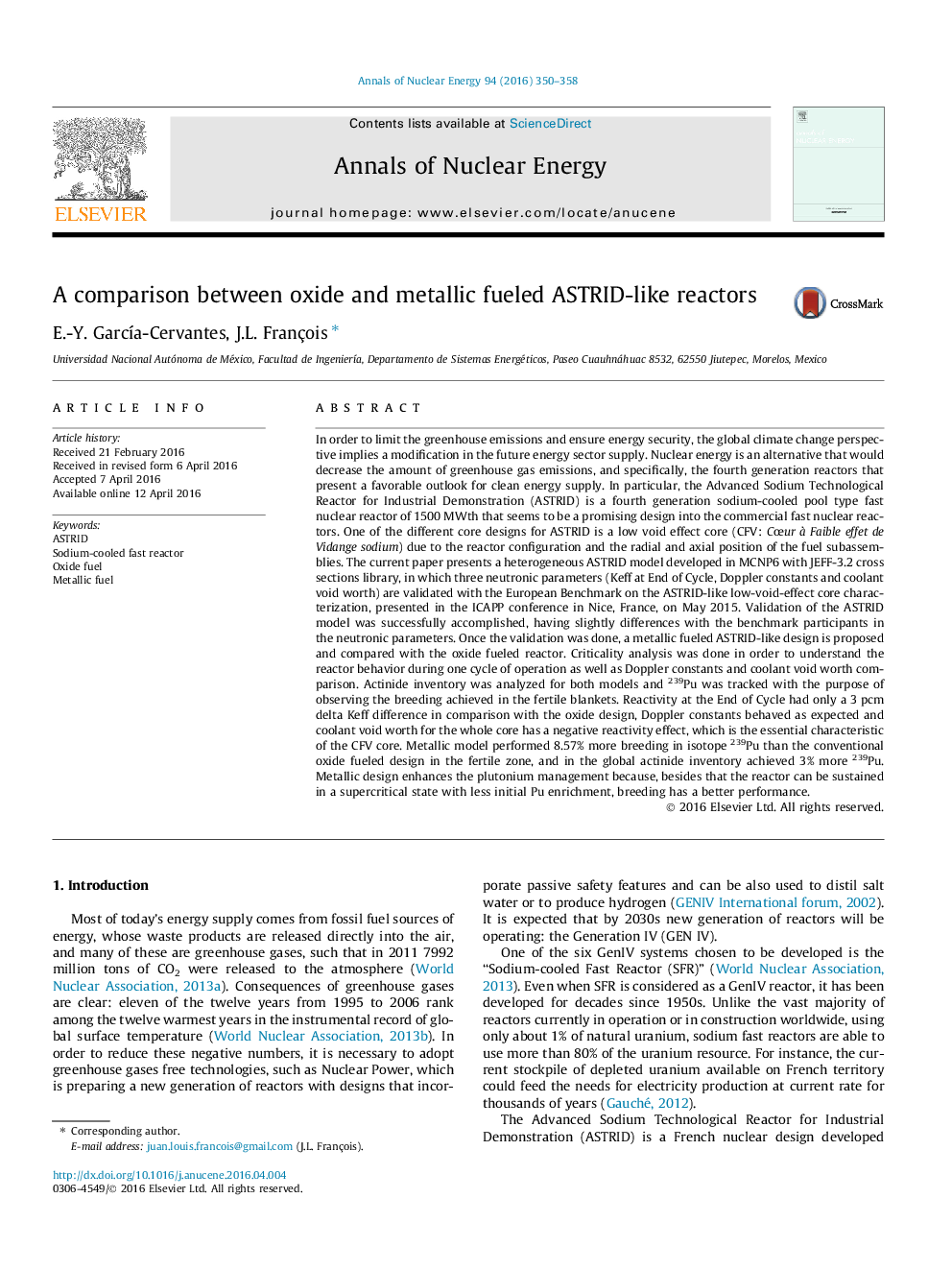| کد مقاله | کد نشریه | سال انتشار | مقاله انگلیسی | نسخه تمام متن |
|---|---|---|---|---|
| 8067702 | 1521103 | 2016 | 9 صفحه PDF | دانلود رایگان |
عنوان انگلیسی مقاله ISI
A comparison between oxide and metallic fueled ASTRID-like reactors
دانلود مقاله + سفارش ترجمه
دانلود مقاله ISI انگلیسی
رایگان برای ایرانیان
موضوعات مرتبط
مهندسی و علوم پایه
مهندسی انرژی
مهندسی انرژی و فناوری های برق
پیش نمایش صفحه اول مقاله

چکیده انگلیسی
In order to limit the greenhouse emissions and ensure energy security, the global climate change perspective implies a modification in the future energy sector supply. Nuclear energy is an alternative that would decrease the amount of greenhouse gas emissions, and specifically, the fourth generation reactors that present a favorable outlook for clean energy supply. In particular, the Advanced Sodium Technological Reactor for Industrial Demonstration (ASTRID) is a fourth generation sodium-cooled pool type fast nuclear reactor of 1500 MWth that seems to be a promising design into the commercial fast nuclear reactors. One of the different core designs for ASTRID is a low void effect core (CFV: CÅur à Faible effet de Vidange sodium) due to the reactor configuration and the radial and axial position of the fuel subassemblies. The current paper presents a heterogeneous ASTRID model developed in MCNP6 with JEFF-3.2 cross sections library, in which three neutronic parameters (Keff at End of Cycle, Doppler constants and coolant void worth) are validated with the European Benchmark on the ASTRID-like low-void-effect core characterization, presented in the ICAPP conference in Nice, France, on May 2015. Validation of the ASTRID model was successfully accomplished, having slightly differences with the benchmark participants in the neutronic parameters. Once the validation was done, a metallic fueled ASTRID-like design is proposed and compared with the oxide fueled reactor. Criticality analysis was done in order to understand the reactor behavior during one cycle of operation as well as Doppler constants and coolant void worth comparison. Actinide inventory was analyzed for both models and 239Pu was tracked with the purpose of observing the breeding achieved in the fertile blankets. Reactivity at the End of Cycle had only a 3 pcm delta Keff difference in comparison with the oxide design, Doppler constants behaved as expected and coolant void worth for the whole core has a negative reactivity effect, which is the essential characteristic of the CFV core. Metallic model performed 8.57% more breeding in isotope 239Pu than the conventional oxide fueled design in the fertile zone, and in the global actinide inventory achieved 3% more 239Pu. Metallic design enhances the plutonium management because, besides that the reactor can be sustained in a supercritical state with less initial Pu enrichment, breeding has a better performance.
ناشر
Database: Elsevier - ScienceDirect (ساینس دایرکت)
Journal: Annals of Nuclear Energy - Volume 94, August 2016, Pages 350-358
Journal: Annals of Nuclear Energy - Volume 94, August 2016, Pages 350-358
نویسندگان
E.-Y. GarcÃa-Cervantes, J.L. François,